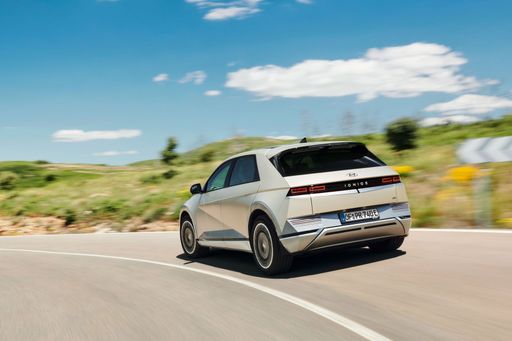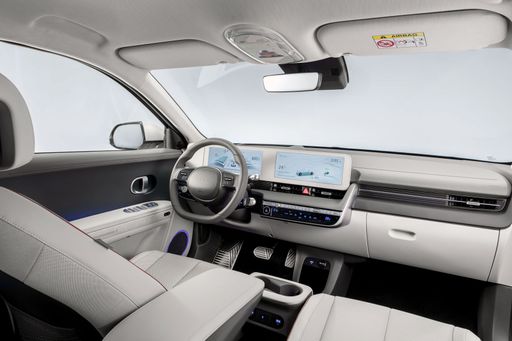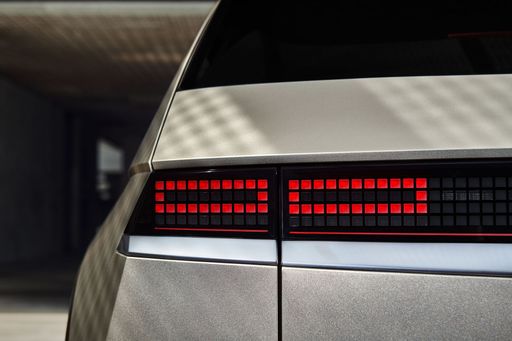Alfa Romeo Junior vs Hyundai IONIQ 5 – Which car suits you better?
Both models have their strengths – but which one suits you more?
Compare performance, efficiency, price and space directly: Alfa Romeo Junior or Hyundai IONIQ 5?
Costs and Efficiency:
Price and efficiency are key factors when choosing a car – and this is often where the real differences emerge.
Alfa Romeo Junior has a convincingly advantage in terms of price – it starts at 25700 £, while the Hyundai IONIQ 5 costs 38500 £. That’s a price difference of around 12814 £.
In terms of energy consumption, the advantage goes to the Alfa Romeo Junior: with 15.10 kWh per 100 km, it’s hardly perceptible more efficient than the Hyundai IONIQ 5 with 15.60 kWh. That’s a difference of about 0.50 kWh.
As for range, the Hyundai IONIQ 5 performs clearly perceptible better – achieving up to 570 km, about 160 km more than the Alfa Romeo Junior.
Engine and Performance:
Under the bonnet, it becomes clear which model is tuned for sportiness and which one takes the lead when you hit the accelerator.
When it comes to engine power, the Hyundai IONIQ 5 has a convincingly edge – offering 650 HP compared to 280 HP. That’s roughly 370 HP more horsepower.
In acceleration from 0 to 100 km/h, the Hyundai IONIQ 5 is convincingly quicker – completing the sprint in 3.50 s, while the Alfa Romeo Junior takes 5.90 s. That’s about 2.40 s faster.
In terms of top speed, the Hyundai IONIQ 5 performs noticeable better – reaching 260 km/h, while the Alfa Romeo Junior tops out at 206 km/h. The difference is around 54 km/h.
There’s also a difference in torque: Hyundai IONIQ 5 pulls convincingly stronger with 770 Nm compared to 345 Nm. That’s about 425 Nm difference.
Space and Everyday Use:
Cabin size, boot volume and payload all play a role in everyday practicality. Here, comfort and flexibility make the difference.
Both vehicles offer seating for 5 people.
In curb weight, Alfa Romeo Junior is significantly lighter – 1380 kg compared to 1955 kg. The difference is around 575 kg.
In terms of boot space, the Hyundai IONIQ 5 offers clearly perceptible more room – 520 L compared to 415 L. That’s a difference of about 105 L.
In maximum load capacity, the Hyundai IONIQ 5 performs a bit better – up to 1580 L, which is about 300 L more than the Alfa Romeo Junior.
When it comes to payload, Hyundai IONIQ 5 distinct takes the win – 530 kg compared to 420 kg. That’s a difference of about 110 kg.
Who wins the race?
The Hyundai IONIQ 5 proves to be is largely superior and therefore becomes our DriveDuel Champion!
Hyundai IONIQ 5 is the better all-rounder in this comparison.
 @ Hyundai Motor Company
@ Hyundai Motor Company
Hyundai IONIQ 5
Alfa Romeo Junior
The Alfa Romeo Junior captures the essence of Italian design with its sleek lines and compact dimensions, making it an icon of elegance and performance. With a spirited driving experience and a charming retro aesthetic, it appeals to enthusiasts and casual drivers alike. This delightful car embodies the brand's rich heritage while remaining a fun and engaging option for those seeking a unique automotive experience.
details @ Alfa Romeo / Stellantis Media
@ Alfa Romeo / Stellantis Media
 @ Alfa Romeo / Stellantis Media
@ Alfa Romeo / Stellantis Media
 @ Alfa Romeo / Stellantis Media
@ Alfa Romeo / Stellantis Media
Hyundai IONIQ 5
The Hyundai IONIQ 5 showcases a bold and futuristic design that captures attention with its striking facade and sharp lines. This electric vehicle offers an impressive blend of performance and efficiency, making it a compelling choice for environmentally conscious drivers. Inside, the spacious and tech-forward interior provides a comfortable and engaging driving experience for both driver and passengers.
details @ Hyundai Motor Company
@ Hyundai Motor Company
 @ Hyundai Motor Company
@ Hyundai Motor Company
 @ Hyundai Motor Company
@ Hyundai Motor Company
 @ Hyundai Motor Company
@ Hyundai Motor Company
 @ Hyundai Motor Company
@ Hyundai Motor Company
 @ Alfa Romeo / Stellantis Media
@ Alfa Romeo / Stellantis Media
|
 @ Hyundai Motor Company
@ Hyundai Motor Company
|
|
|
|
Costs and Consumption |
|
|---|---|
|
Price
25700 - 41600 £
|
Price
38500 - 64200 £
|
|
Consumption L/100km
4.8 - 5.4 L
|
Consumption L/100km
-
|
|
Consumption kWh/100km
15.1 - 17.5 kWh
|
Consumption kWh/100km
15.6 - 21.2 kWh
|
|
Electric Range
344 - 410 km
|
Electric Range
440 - 570 km
|
|
Battery Capacity
0.4 - 51 kWh
|
Battery Capacity
63 - 84 kWh
|
|
co2
0 - 119 g/km
|
co2
0 g/km
|
|
Fuel tank capacity
44 - 45 L
|
Fuel tank capacity
-
|
Dimensions and Body |
|
|---|---|
|
Body Type
SUV
|
Body Type
SUV
|
|
Seats
5
|
Seats
5
|
|
Doors
5
|
Doors
5
|
|
Curb weight
1380 - 1689 kg
|
Curb weight
1955 - 2275 kg
|
|
Trunk capacity
340 - 415 L
|
Trunk capacity
480 - 520 L
|
|
Length
4173 mm
|
Length
4655 - 4715 mm
|
|
Width
1781 mm
|
Width
1890 - 1940 mm
|
|
Height
1505 - 1538 mm
|
Height
1585 - 1605 mm
|
|
Max trunk capacity
1205 - 1280 L
|
Max trunk capacity
1540 - 1580 L
|
|
Payload
390 - 420 kg
|
Payload
385 - 530 kg
|
Engine and Performance |
|
|---|---|
|
Engine Type
Electric, Petrol MHEV
|
Engine Type
Electric
|
|
Transmission
Automatic
|
Transmission
Automatic
|
|
Transmission Detail
Dual-Clutch Automatic, Reduction Gearbox
|
Transmission Detail
Reduction Gearbox
|
|
Drive Type
Front-Wheel Drive, All-Wheel Drive
|
Drive Type
Rear-Wheel Drive, All-Wheel Drive
|
|
Power HP
136 - 280 HP
|
Power HP
170 - 650 HP
|
|
Acceleration 0-100km/h
5.9 - 9.1 s
|
Acceleration 0-100km/h
3.5 - 8.5 s
|
|
Max Speed
150 - 206 km/h
|
Max Speed
185 - 260 km/h
|
|
Torque
230 - 345 Nm
|
Torque
350 - 770 Nm
|
|
Number of Cylinders
3
|
Number of Cylinders
-
|
|
Power kW
100 - 207 kW
|
Power kW
125 - 478 kW
|
|
Engine capacity
1199 cm3
|
Engine capacity
-
|
General |
|
|---|---|
|
Model Year
2024 - 2025
|
Model Year
2024
|
|
CO2 Efficiency Class
A, C, D
|
CO2 Efficiency Class
A
|
|
Brand
Alfa Romeo
|
Brand
Hyundai
|
What drive types are available for the Alfa Romeo Junior?
Available configurations include Front-Wheel Drive or All-Wheel Drive.
The prices and data displayed are estimates based on German list prices and may vary by country. This information is not legally binding.
